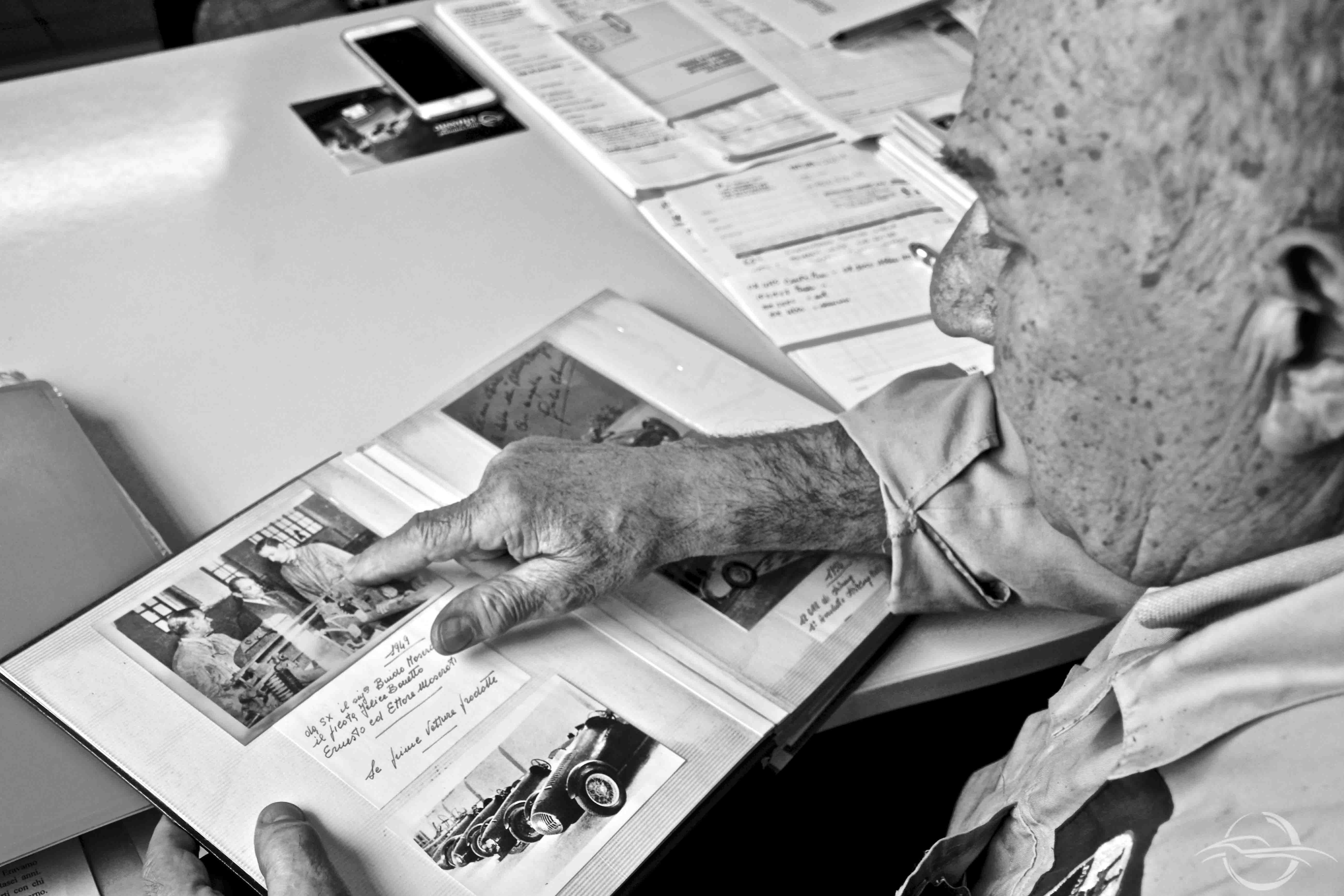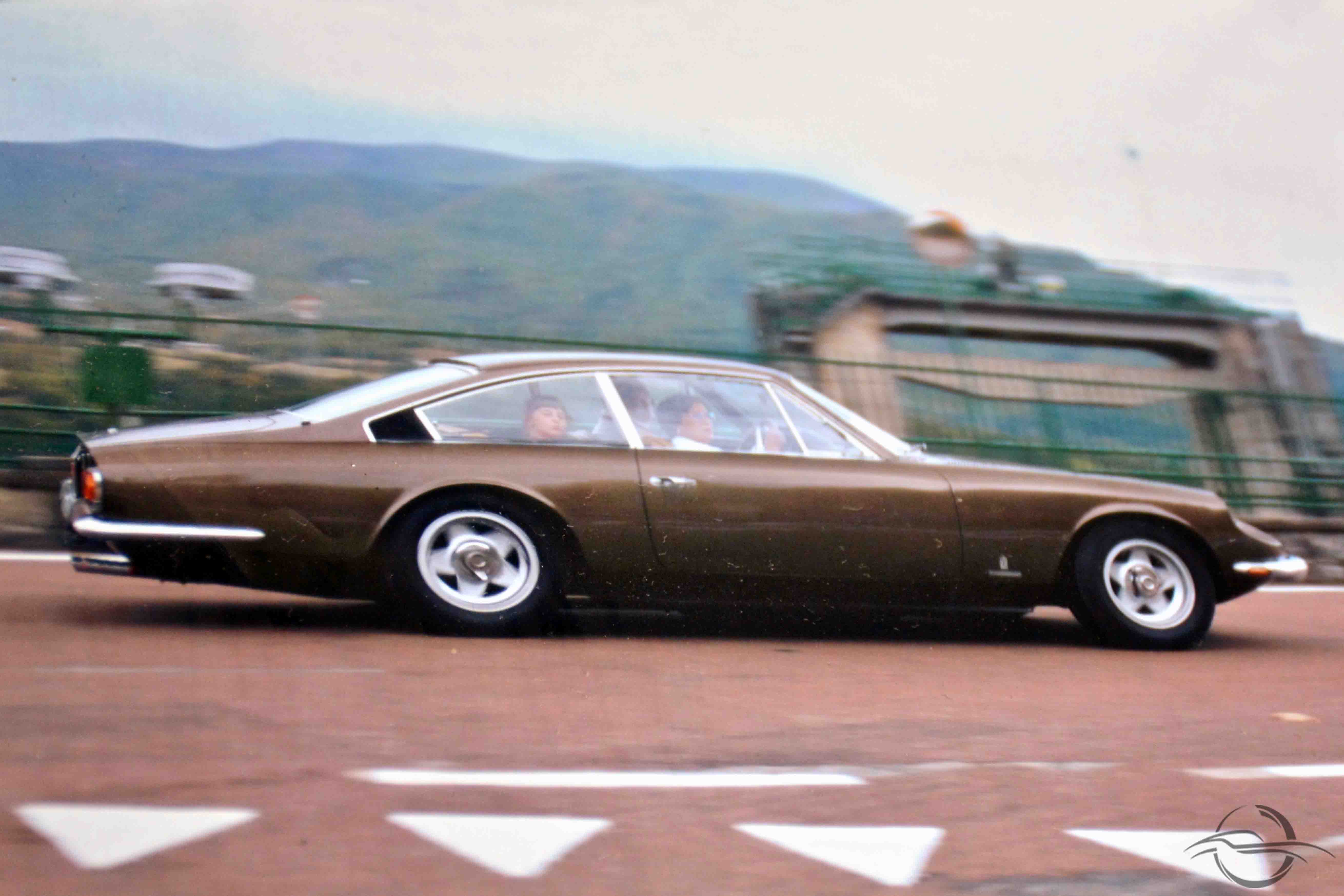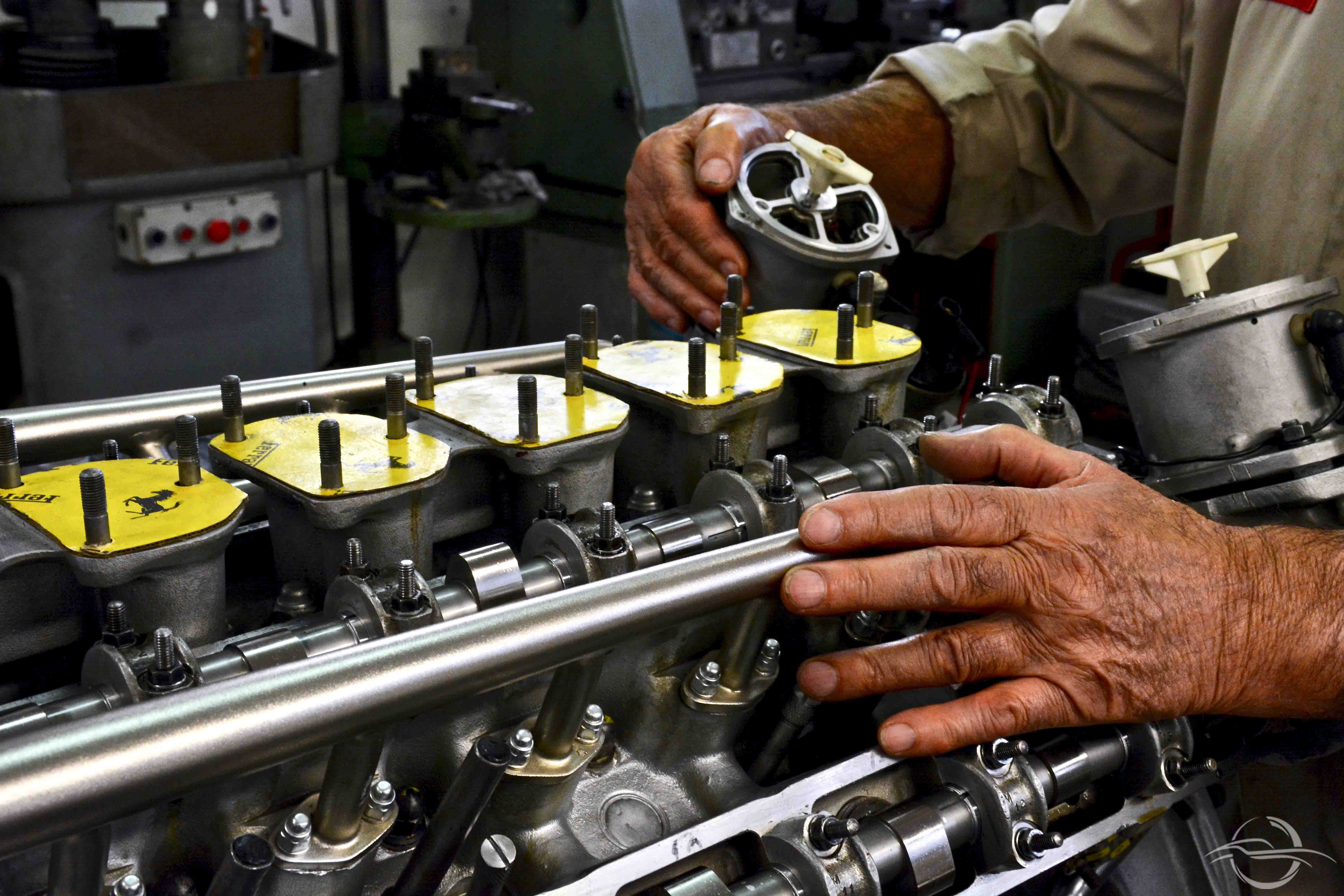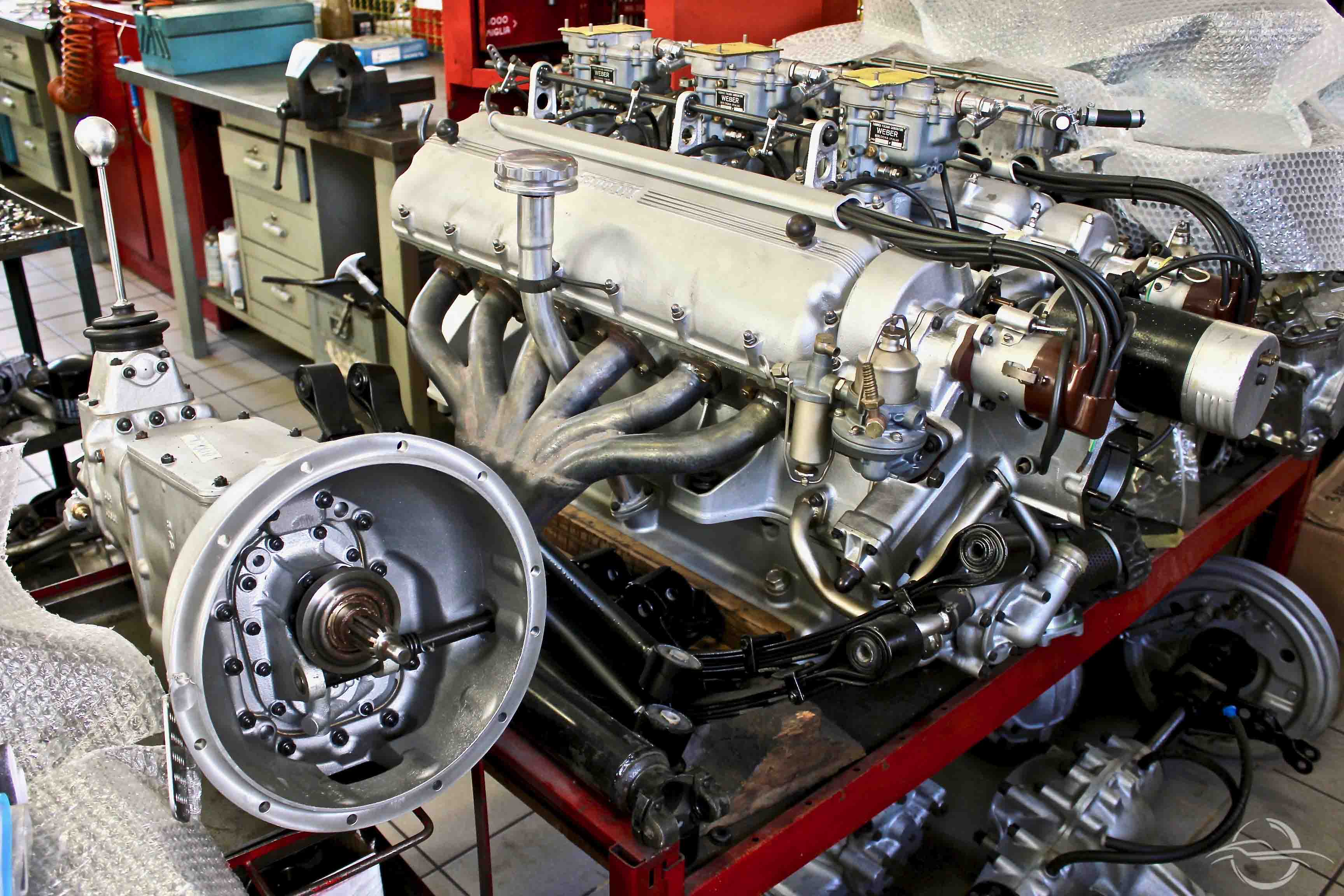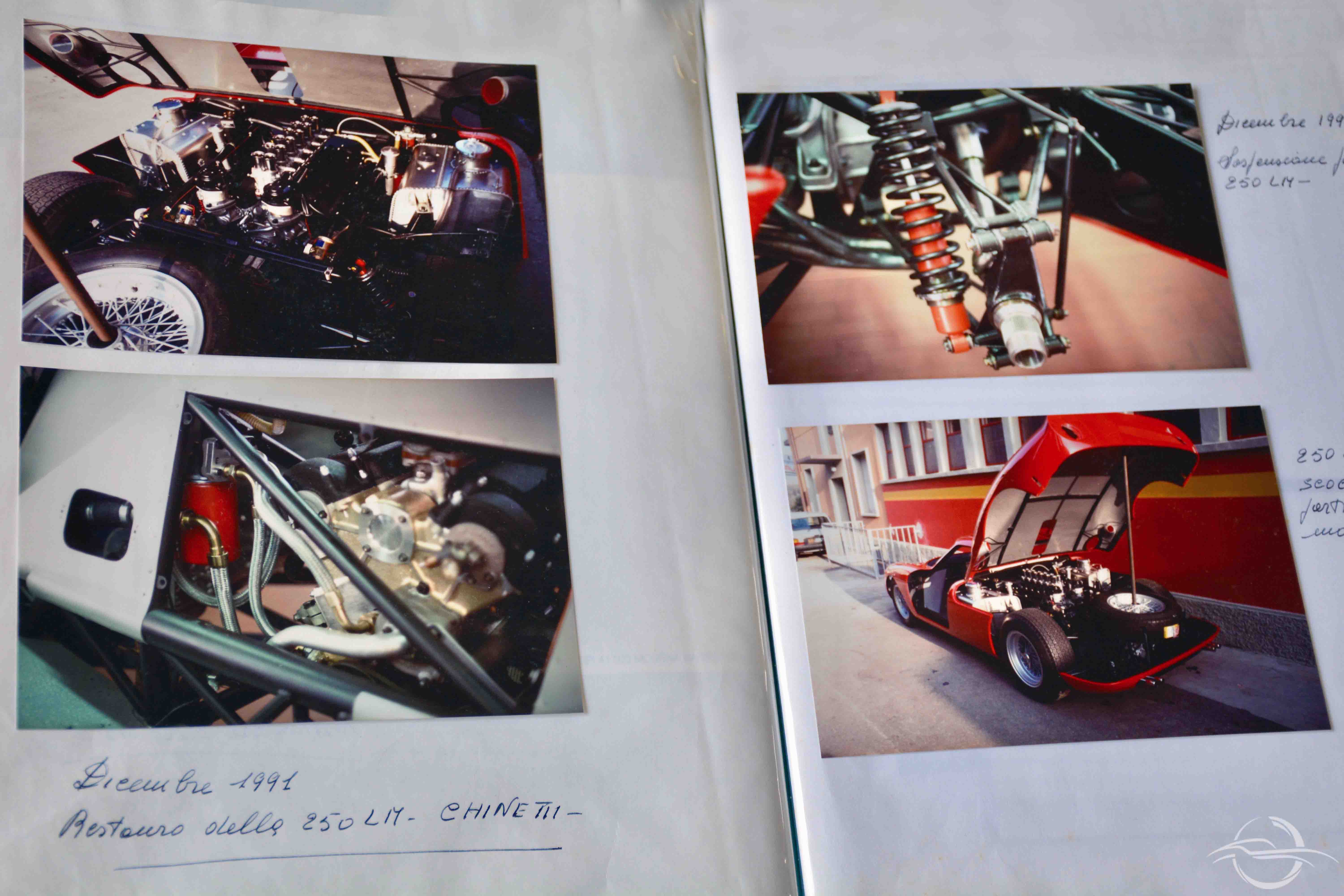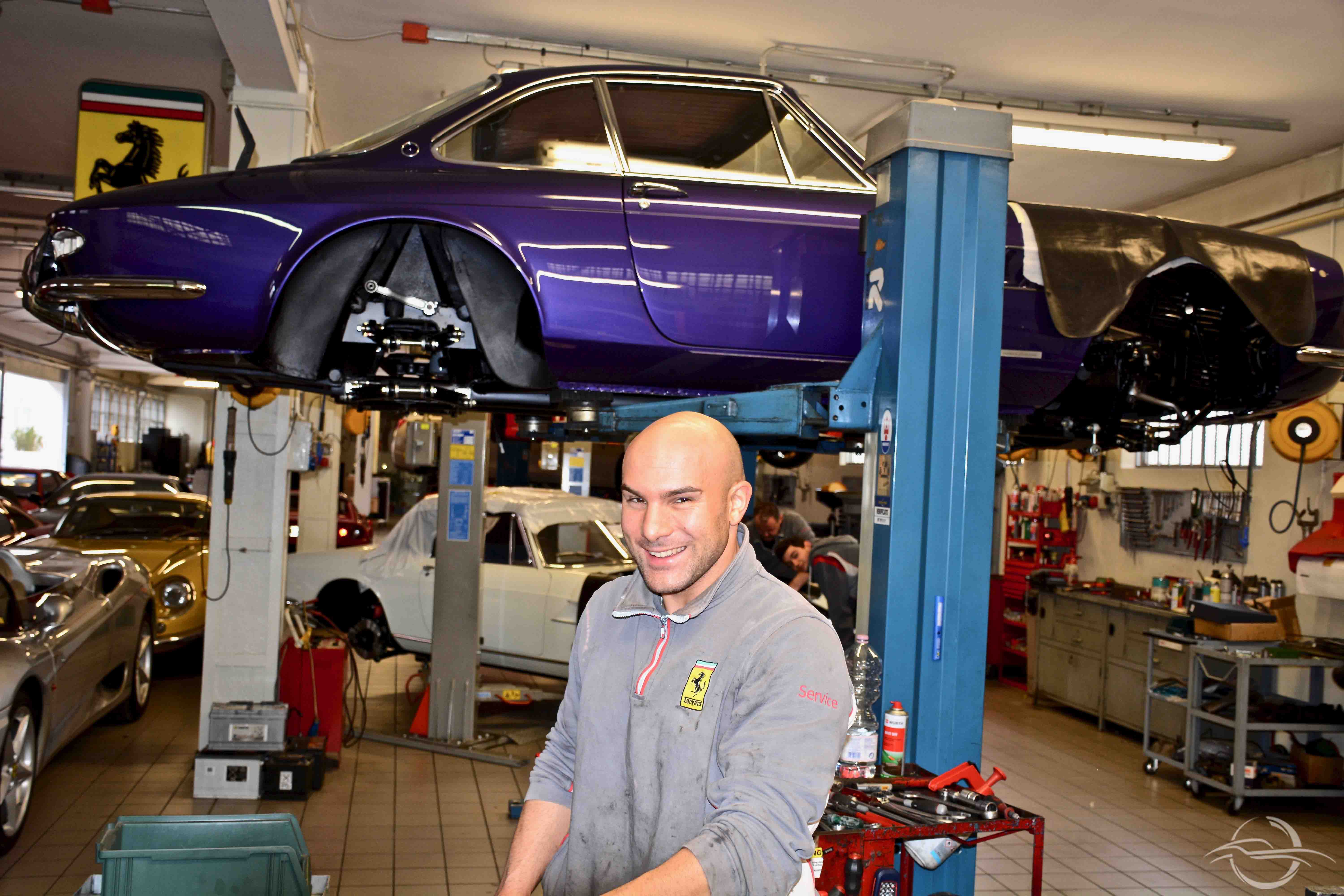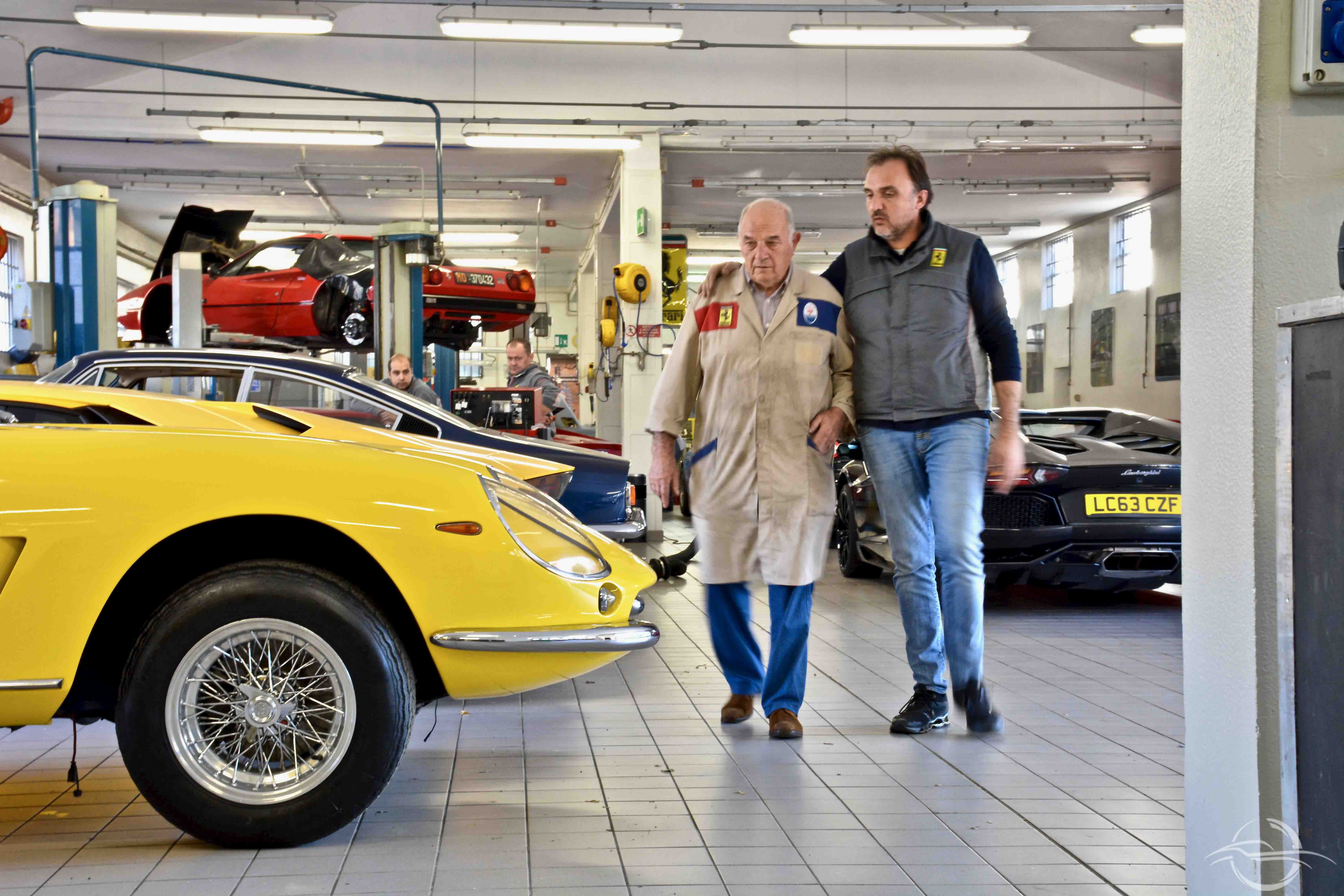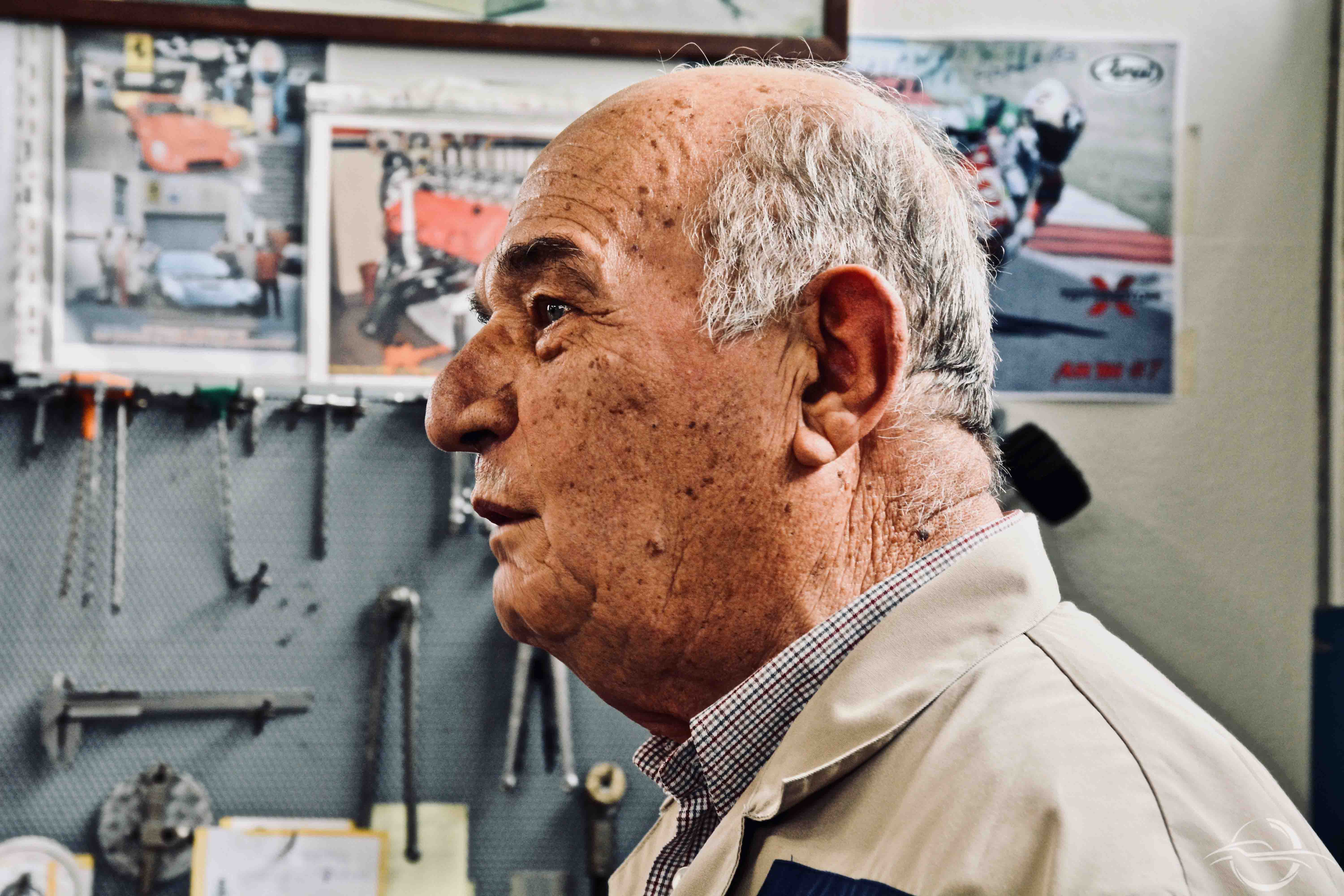Autofficina Sauro, the engines in his hands
Sure, someone may say that restoration is a business, but it’s obvious that Rizzoli disagrees. His workshop talks clearly, just like his delicate and meditative passion, through which his hands “talk” with engines. In Luciano Rizzoli’s touch there’s the sense of a past which comes back to life, just like memories do.
While working – he confesses – he often thinks about something else. Of course, not every time. “During the timing phase, you need to be very focused. They cannot even call you on your phone. However, on other occasions, I think about household matters: the electricity bill, the food shopping… I have nobody waiting on me anymore. There are myself and a cat, which isn’t even my own, but it’s the building’s. One day, I found it scratching on my shutters to get it. What is its name? I don’t call it by name, or better: I called it Cat. There are some days when I even have three cats: that poor devil invites his friends over for lunch too!” He laughs and shows me photographs and engines, engines and photographs
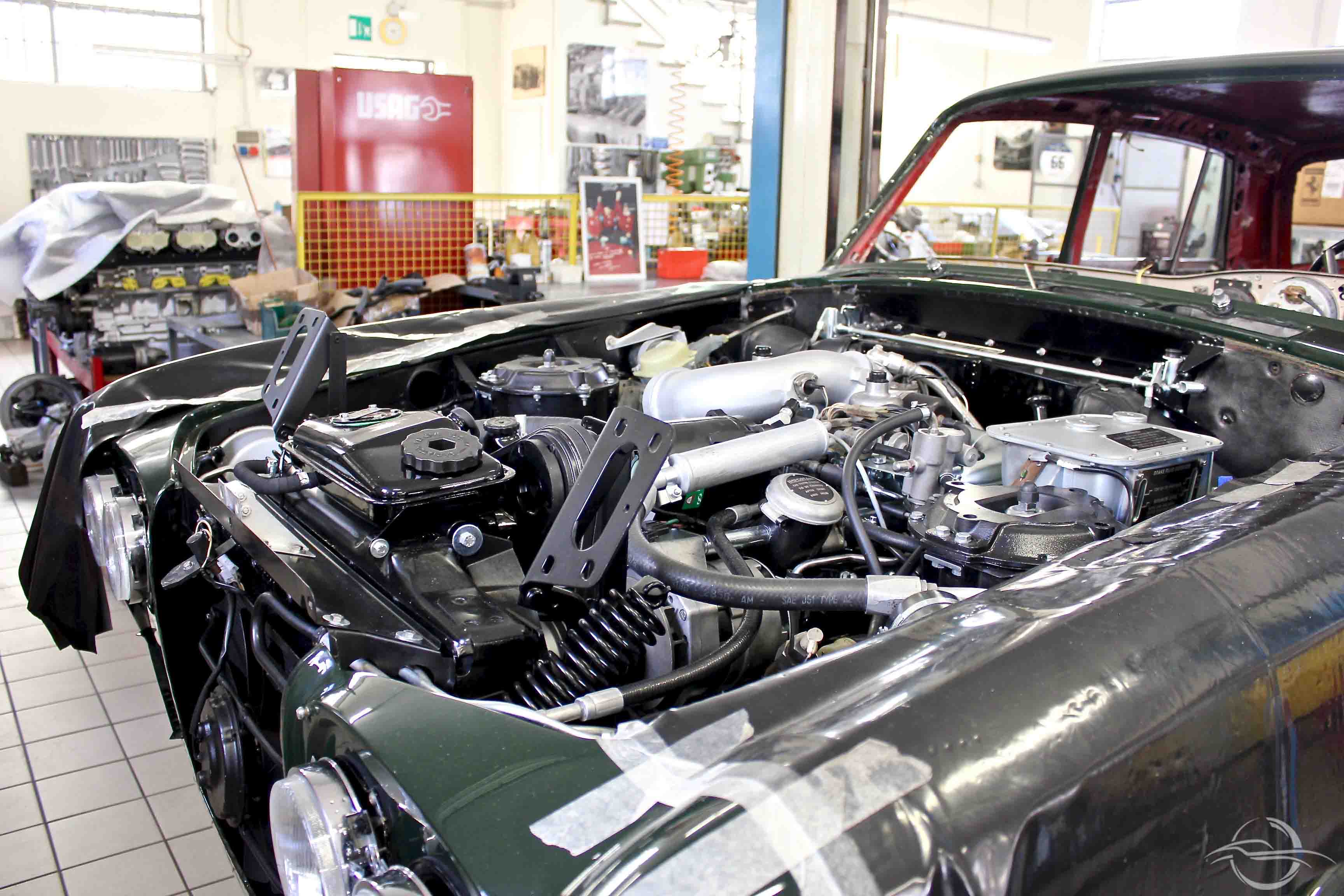
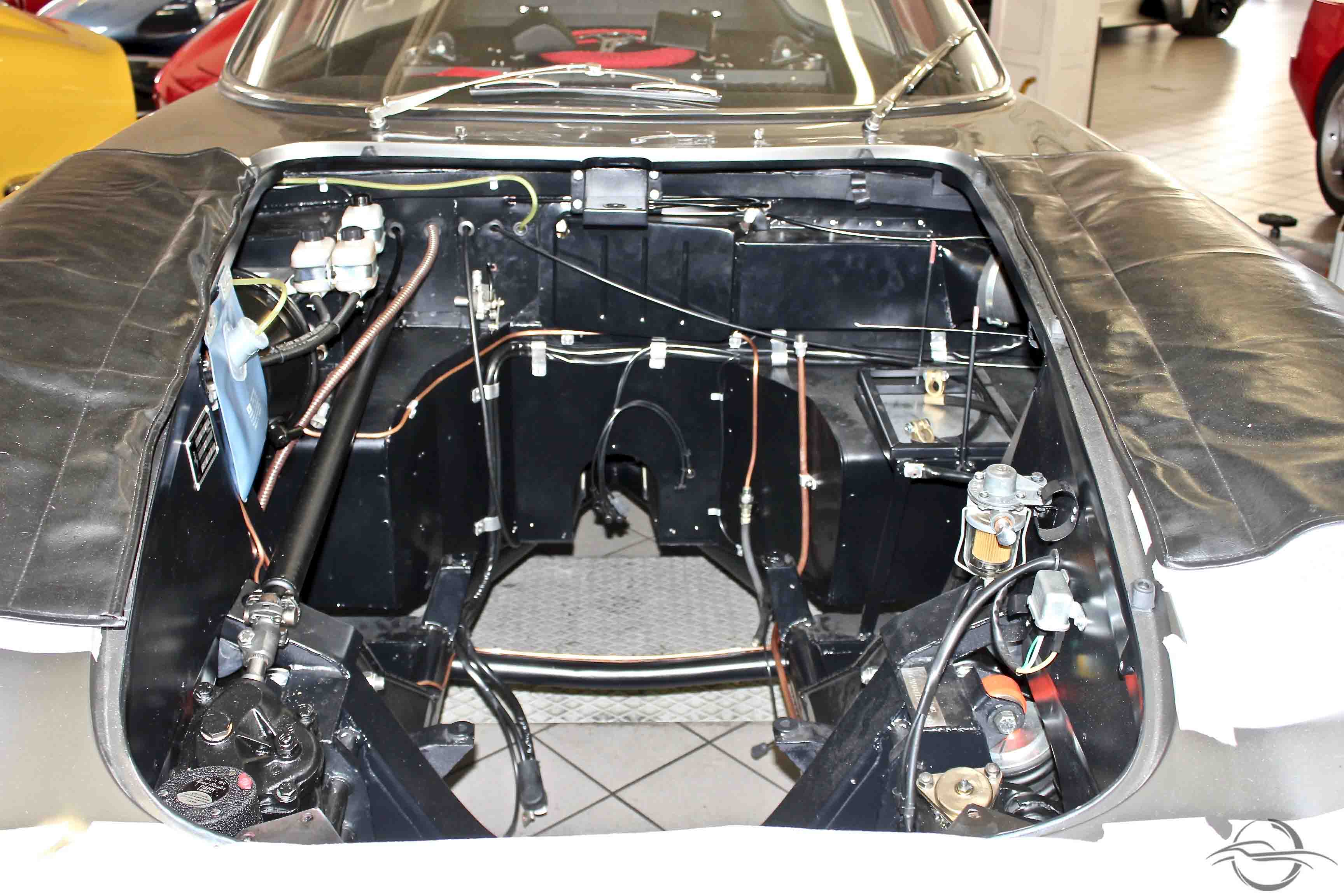

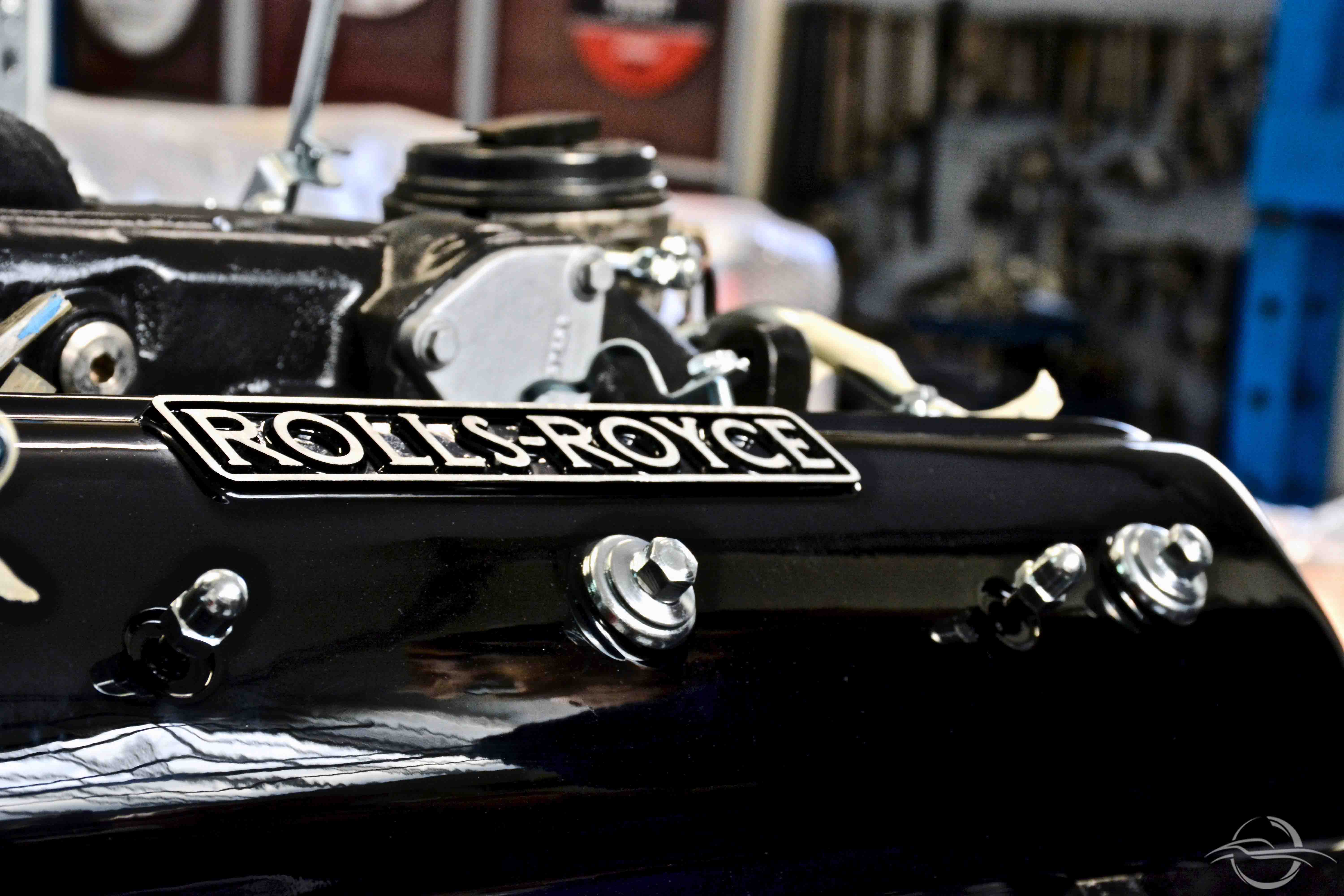
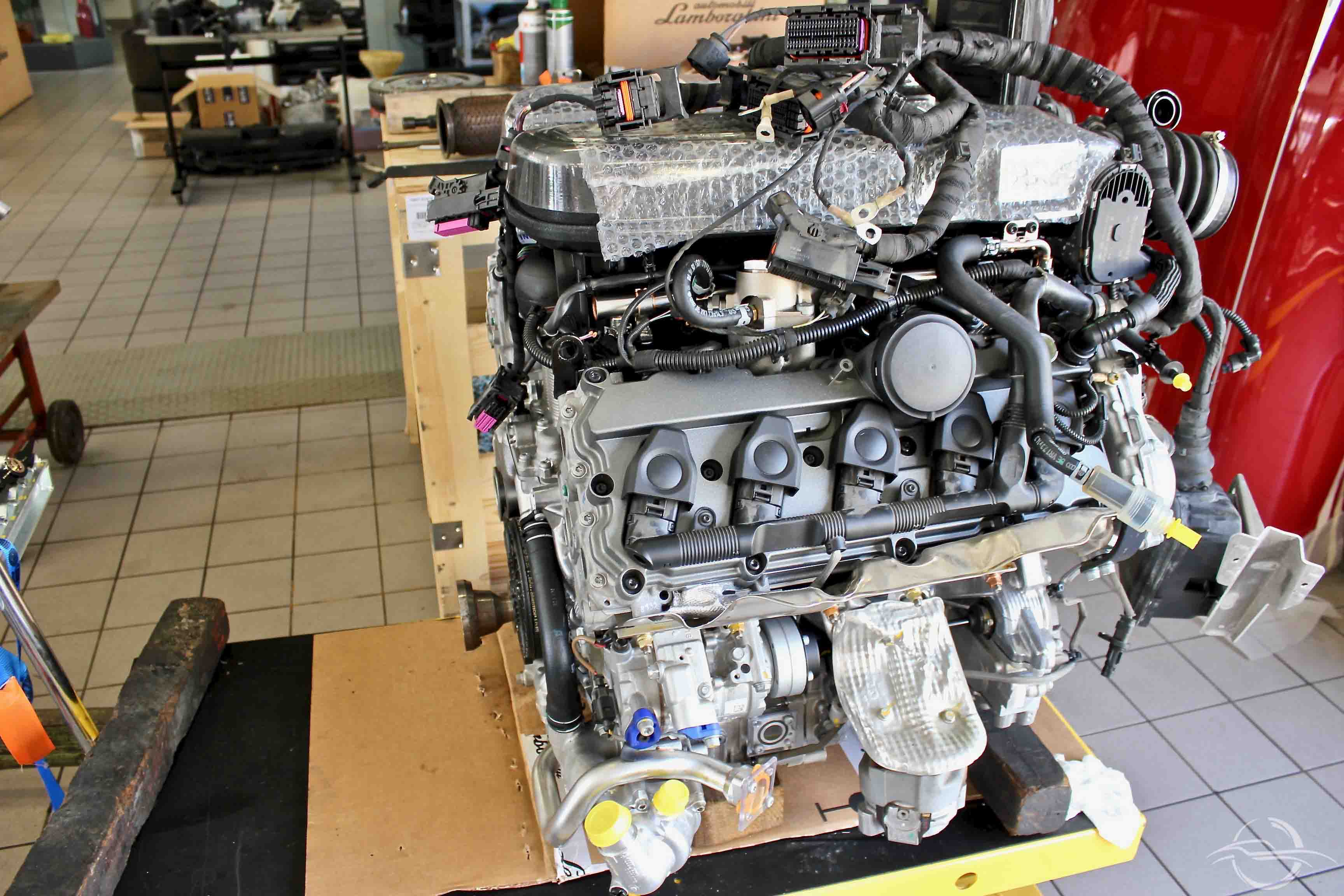
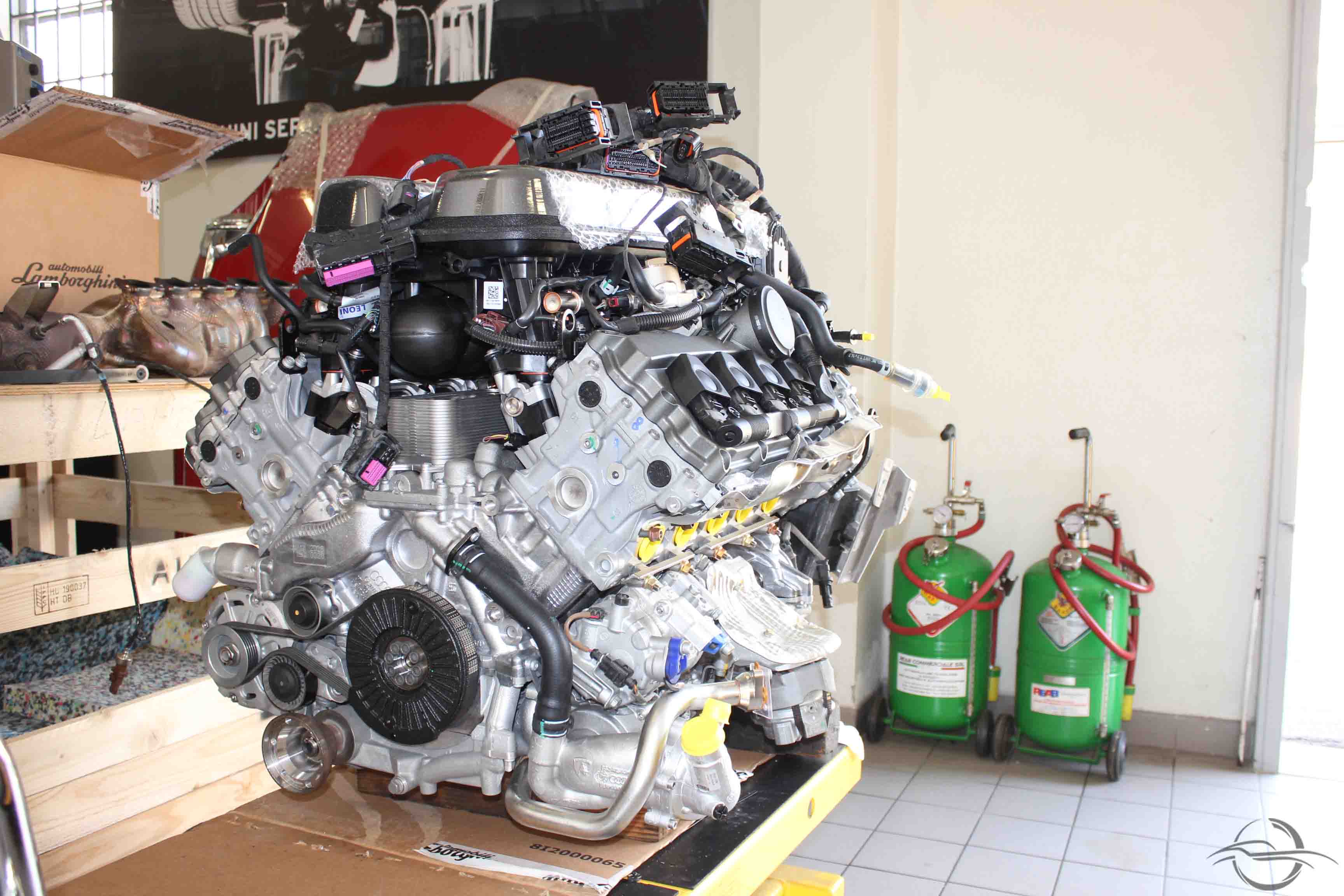






He talks about when he got called – by his old school, the technical school Aldini Valeriani – and so, as a surprised, they gave him an honorary diploma. That happened after he – publicly – read one of his school reports. “I was extremely embarrassed. I told the lady who gave me the diploma that I didn’t think that I deserved it. And do you know what she answered back?”, “We’re not giving you a diploma for when you came to school. This is for what you’ve done later: for your after-schooling.”
Afterwards, he shows me some photocopies stored in a folder.
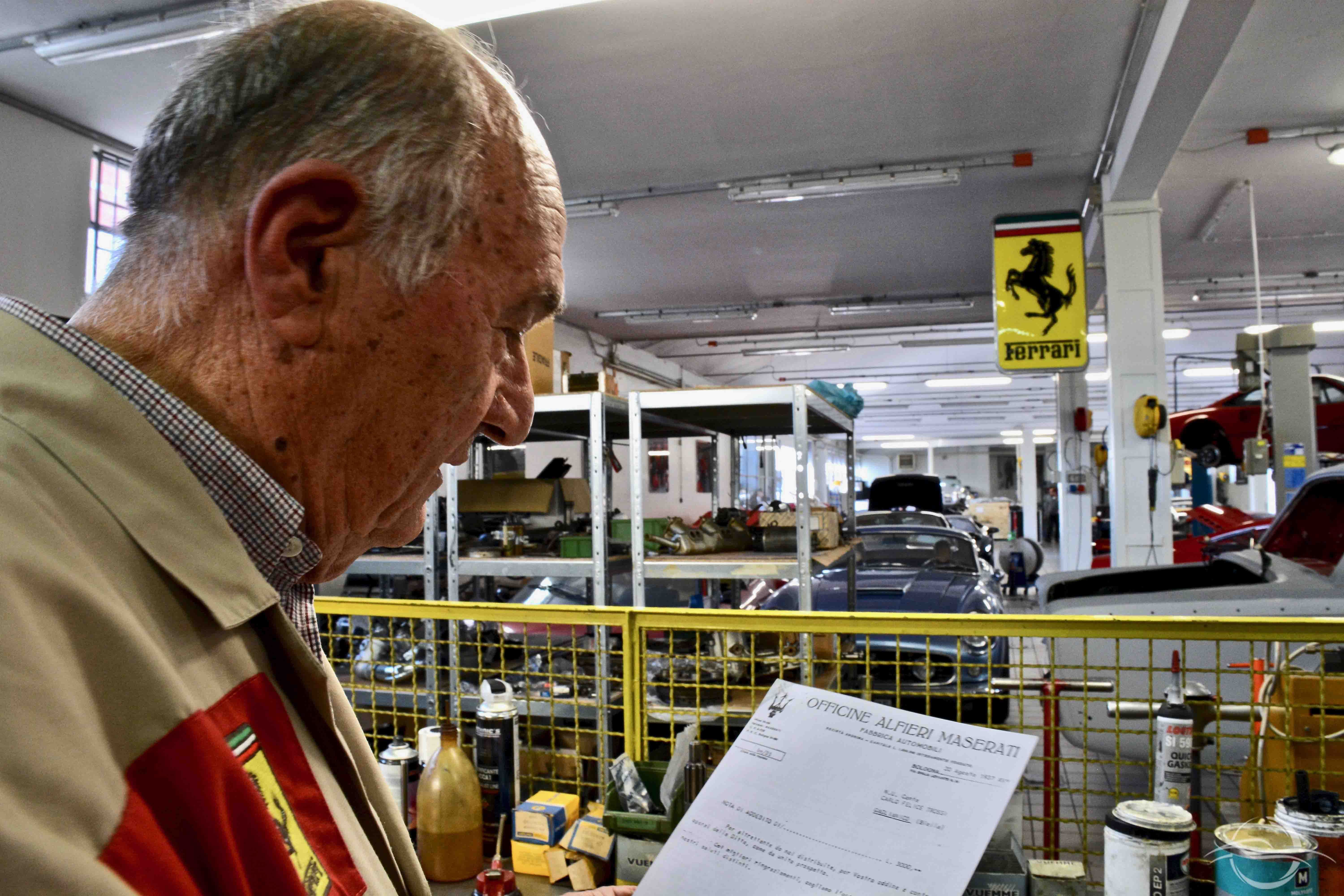
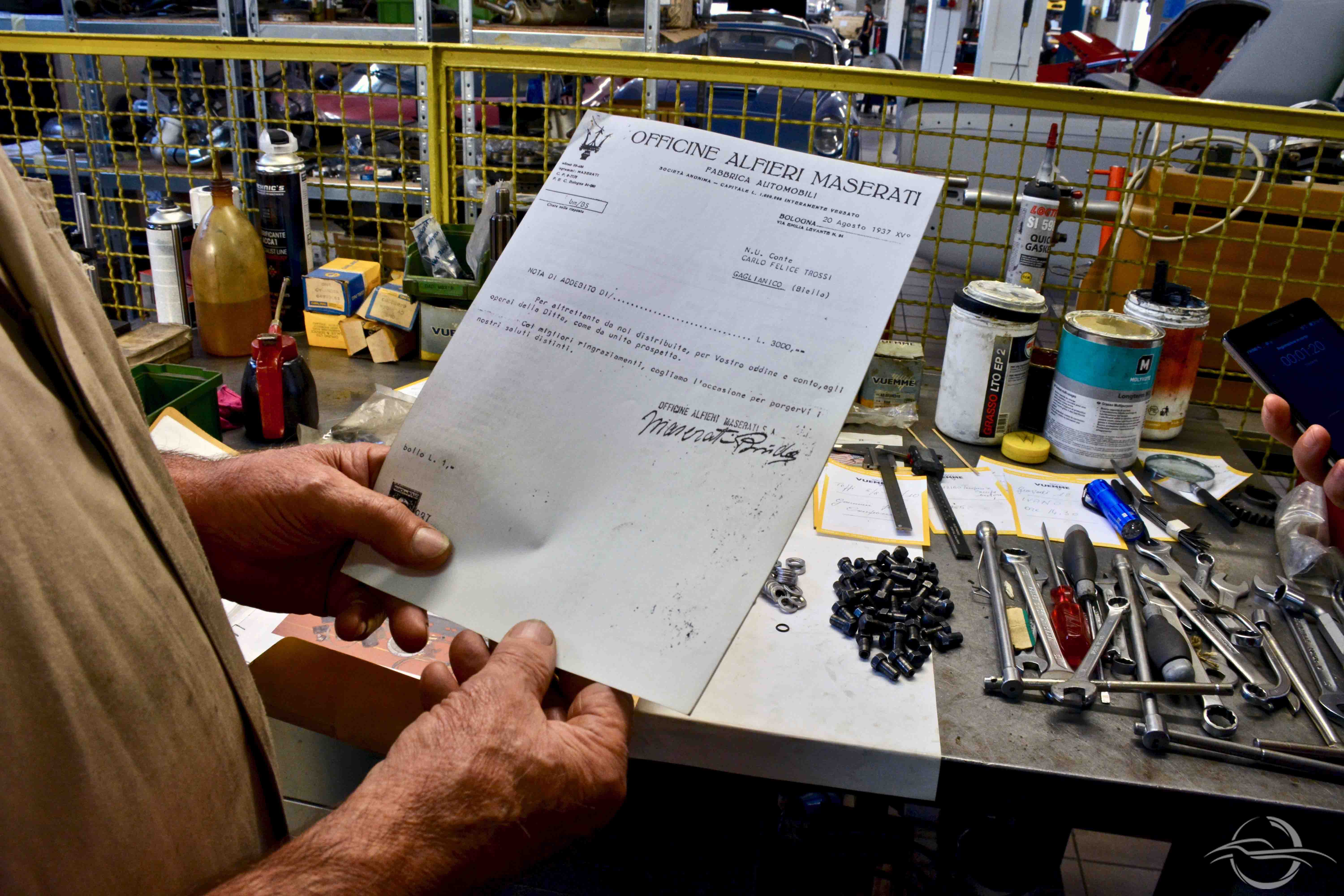
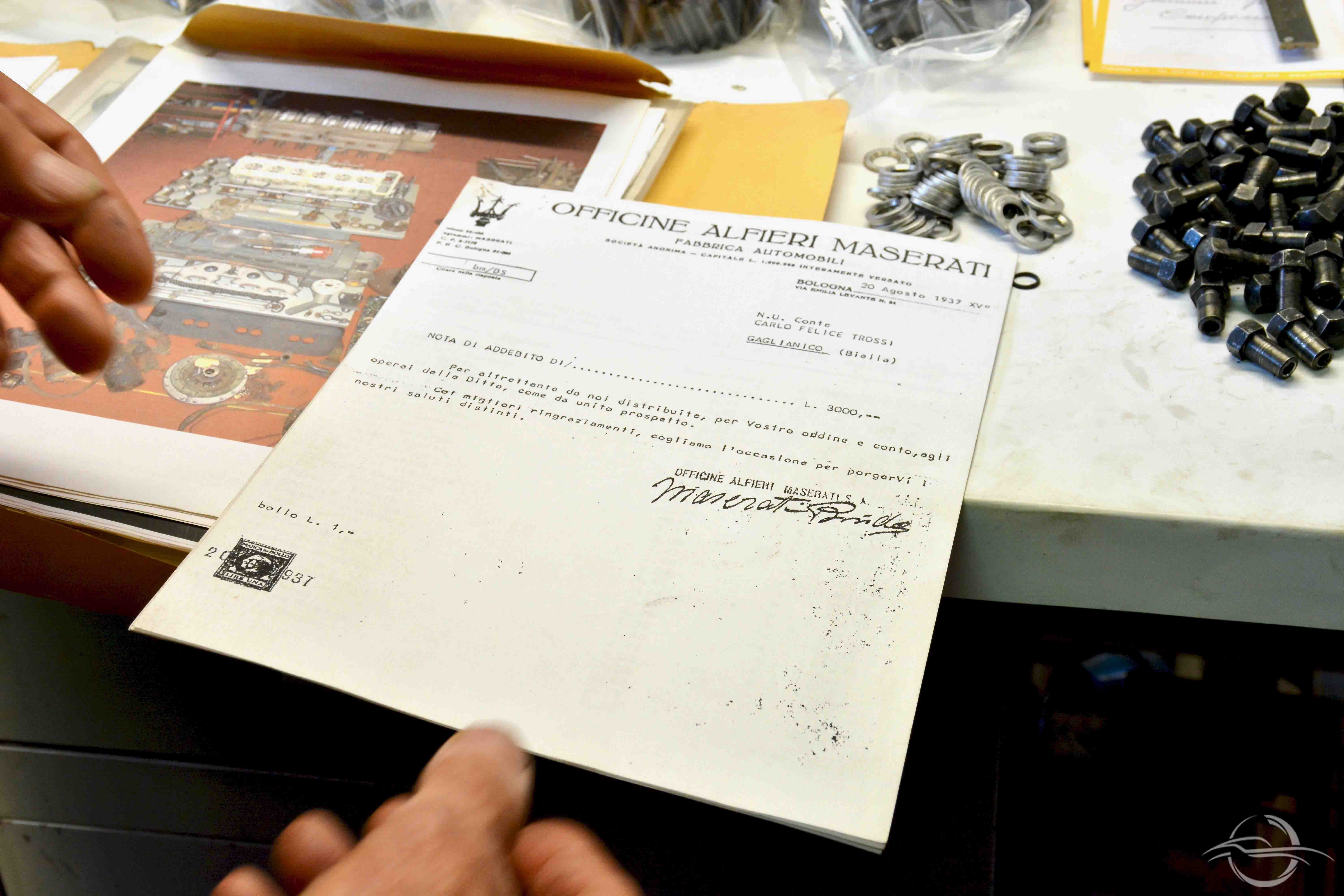





He explains that a dear friend of his, who’s now left us, had the original copies, he was one of the mechanics who received his share… and he tells me a story – a nice story – which dates back to the time of the “Gentleman Driver”: the very first pioneers, who raced on-board their carriages, but then started venturing into the car world, leaving the carriage behind for the first racing cars. They were all noble or from very good families – Rizzoli tells me – and a noble from Biella was amongst them too: Count Carlo Felice Trossi, who raced for Maserati. When Trossi won the Grand Prix, in 1937, he refused to keep the 3,000 Liras from the victory for himself, and he spread them across all of Maserati’s employees. A real gentleman! Rizzoli is touched when he talks about him.
- Carlo Felice Trossi – Photograph from the volume “Piloti che Gente” Enzo Ferrari
Maybe, that is another thing which links him with classic cars: the connection with the past – yes – but not only that. Because the man that I’m facing – this placid man who is “four times twenty” – is a gentleman too: a simple gentleman. And this emerges from every aspect of his personality.
- Luciano Rizzoli
– Please tell me: with a passion like your own, I guess that I also own a classic car…
Rizzoli nods smiling.
– Yes, I have my very own “hag”. It isn’t actually my favourite car, nobody wanted it though, so I thought: “I’ll go home, work out money with my wife and I’ll see”.
In ’73, the government had implemented a restriction on the use of cars, in order to face the energy crisis, so we managed to purchase two cars for very little. Basically, they used to give them to you for nothing: one is a 365 GT 2+2 Altair (I think that it was one of the nicest cars made by Pininfarina) and a Daytona. The latter went from riches to rags… now it’s back in fashion, but I left it to my business partner. Whereas, I still have my 365 Altair at home, with its battery power pack attached.
- Ferrari GT 2+2 Altair
I turn the key and it starts straight away! It has road tax and insurance. On a Saturday afternoon or on a Sunday morning, I go for a ride in the Bologna hills and then I park it back in the garage. It’s a very nice car to drive: it has everything, even hydraulically assisted steering. You use it as a Mercedes, but with the sound of the 12! Everybody asks me for it because it’s as good as new. Nobody touched anything: the colour is still the original one too, bronze gold with a champagne coloured interior.
He strokes the engine that he has in front of him as if it was a cat, and it is clear that he’s thinking about something else.
– You already knew the engines when they were being sold. Today, you have them in your hands for restoration, it must be like going back to the past for you…
– As a matter of fact, I feel like I never age. I mean, previously I provided the support service. Today, the restoration is performed on yesterday’s cars.
– And how does the restoration of an engine work?
Rizzoli points at the engine of a Ferrari 342 America in front of him, disassembled and divided over three shelves.
– Can you see this engine? It’s come from the USA: they sent it disassembled, as you see it. Now I need to look at what is missing and what I have if it’s fine or not. Then I assemble it and then we go to the test room.
- Ferrari 342 America Assembled Engine
– Do you prefer disassembling the engines yourself?
– No, I know them anyway. I even have a library with all of the technical information actually: with photographs and schemes of the engines which I worked on through the years. But I don’t have everything.
– When working on an engine, do you ever add anything?
– No, never. I’m against people who say “I’ll modify and change this!”, I want the restoration work to be as consistent with the original part as possible, just like when it was constructed. I always said (and I reiterate it) that I don’t invent anything: when compared with what the designer did.
Often, you cannot find the parts and you need to re-create them, you need to sit there, find a photograph, a drawing and re-construct it… it’s everything but easy. Actually, today, many want a certification, Ferrari checks all minimal details: of course, in these cases, you cannot make any changes whatsoever. If the spare part was missing, then I’d have to re-construct it, that’s not a problem, but the part needs to be compliant. As a principle, you cannot do anything different from the original part and you should also remove what others may have added to it.
– How can you distinguish the elements which have been added?
– With documentation, of course, as well as with a lot of memory.
The memory, of course. The mysterious red thread which sews past and present together, by tracing, with difficulty, continuity. And this is what the art of restoration is actually searching for and that is how I see a restorer, mechanic or panel beater inside me: as a performer of balancing arts, who’s constantly balancing between two worlds. I meditate on my next question for Rizzoli since the beginning of our conversation, and it’s actually focused on this concept.
– What is the key difference between the past and the present, in your job?
– Well, you know, there are several differences. Once relates to how you present yourself. I’m teaching my job to my son Francesco and to Marco, another guy who’s been working with me for around 36 years.

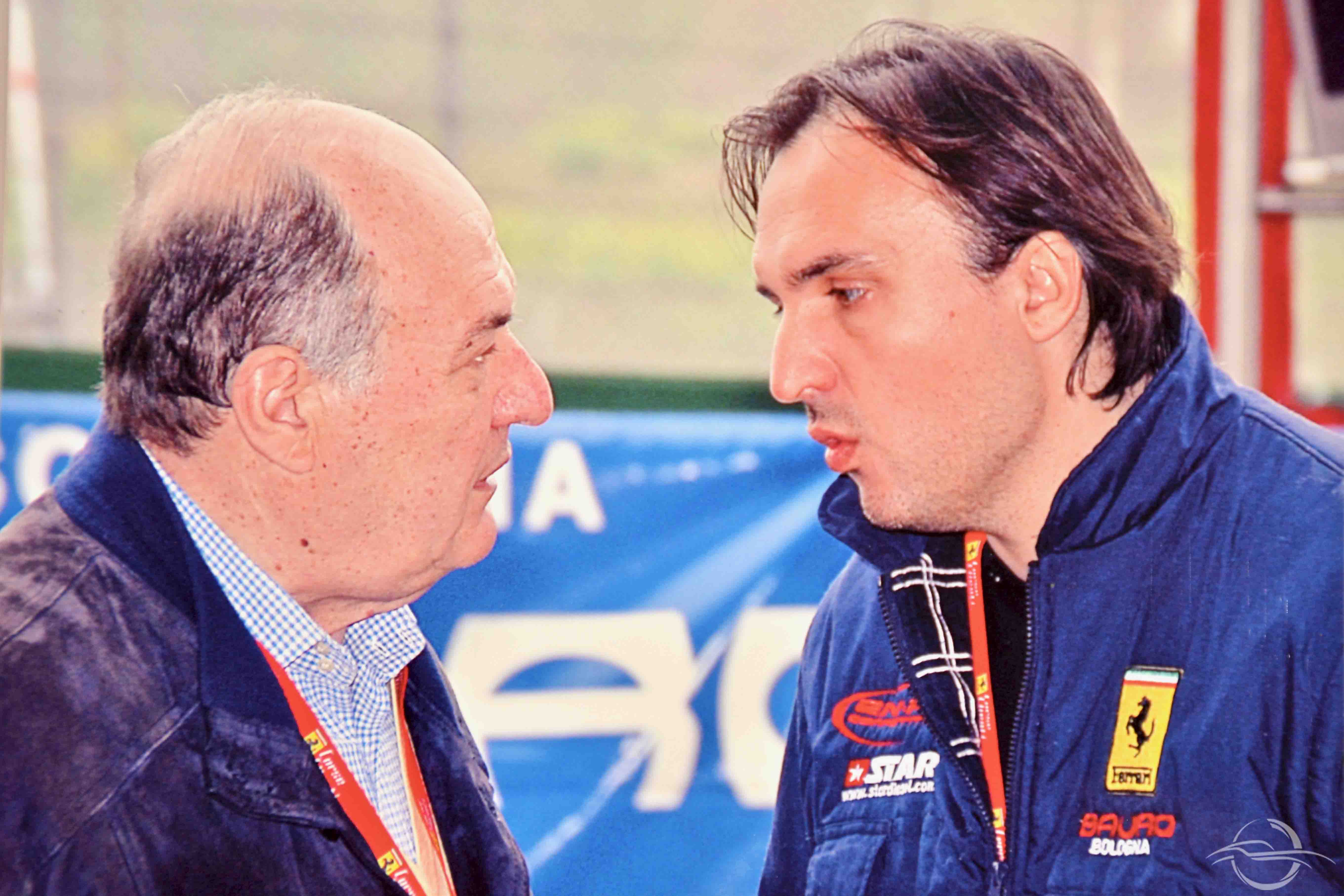
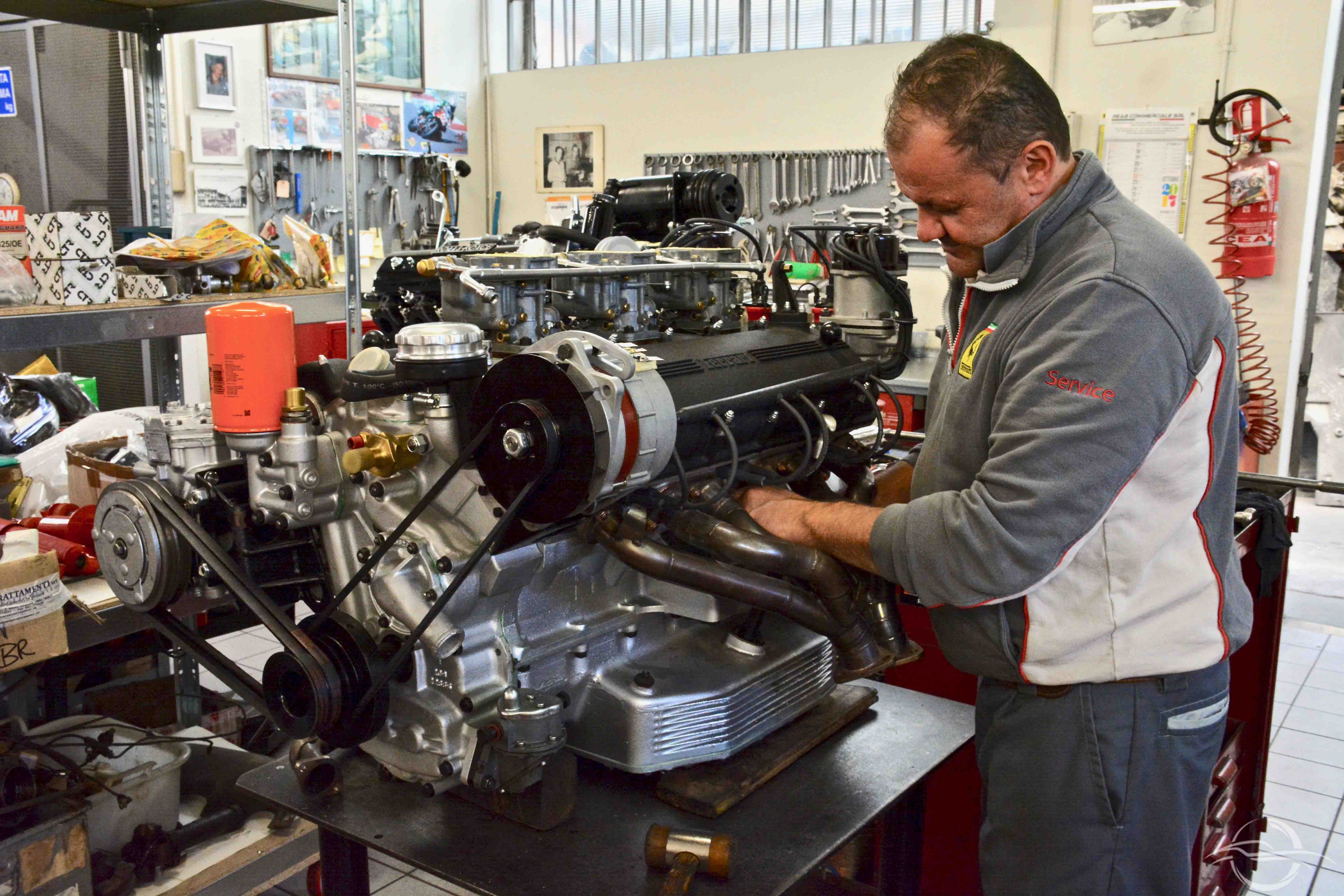




– However, I guess that the key differences between yesterday and today are others, aren’t they?
– Yes, the key watershed is the approach to manual skills: something which doesn’t tend to exist anymore. Today, when the client arrives with a problem, you attach two plugs and a computer tells you what you need to do… that’s great, of course, but they don’t fix what is broken, they throw it away and they replace it.
– Does that mean that your job will disappear?
– No, on the contrary… there will be more and more work in this industry. Of course, you see many young people who are interested in continuing doing it, but I’m training them in my small reality.
When Rizzoli talks about “his boys”, he’s enlightened and it actually looks like, in a certain way, he considers them as his own children. There are actually some of them who grew up in here.
- Alessio employee of the Autofficina Sauro
– Sometimes, someone leaves and I understand them but, I have to confess that I’m a little upset about it. For example, when Ferrari opened a dealership in Morocco, they asked one of our guys if he could go there for a few months. We had a guy here, who had Moroccan parents… His name is Rachid, but we used to call him Raimondo, he spoke in Bolognese dialect and ate tagliatelle with ham. We proposed to him to go to Casablanca for three months and he accepted. In the end, he stayed there. Recently he came to Italy and he came in to see us. He thanked me and he embraced me: “Luciano, thank you so much for the opportunity that you gave me. They gave me a car and a house there, I love it”. What shall I do? I’m happy for him, but I’m sorry that I lost him. That is one of the differences between today and yesterday too: in the past, the employees used to stay.
– How many guys work with you today?
– Chiara in the office, while there are 7 guys in the workshop, 2 work with me, on restorations, one works in the warehouse: his name is Raffaele, he plays guitar and he has a passion for music. He also has a little band which he plays with in the evening… Raffaele also has another skill: he speaks several languages.
- Luciano Rizzoli and his son Francesco
- Luciano Rizzoli and his son Francesco
[/vc_column_text]
He points at another, very young guy.
– That one is Gabriele: he’s here for work experience, he’s 18 and he’s getting his diploma this year. The Easter holidays had just started and rather than staying at home peacefully, he told me: “Can I come in anyway?” He has a passion, and one of his qualities is that he knows straight away what you need and he passes it on to you, without you having to ask him for it. It’s true that, at 18 years old, you’re normally bright, but the passion also counts. Of course, it counts!
– Please admit it, your employees are a little like your children…
– Well, yes. It might also be because I love this place and my job very much.
– What do you like about your job?
Rizzoli doesn’t answer straight away. He takes all of the time he needs, then he points at an engine, which has arrived from the USA.
– The computer is the new way of working… but when you find the breakdown, the part isn’t fixed, you throw it away and replace it. It’s cheaper to get a new spare part than the workforce to fix it. Learning manual skills isn’t easy unless you have the curiosity to do so. There is no longer the habit of listening, the intuition and the being able to pay attention to the engine’s voice… there is no more that sense, today you use electronics. Besides that, look… As I mentioned previously, that engine arrived in a casket, all disassembled. You have to build what it’s missing, then you assemble everything again and you go to the test room… That is when the miracle happens. When you turn the key and you hear the engine crying, just like a new-born… that is when you are moved and you can’t wait to do another one!
By International Classic, written by Martina Fragale
Read more:
The Gentleman of the engines – Chapter 1
The Gentleman of the engines – Chapter 2



